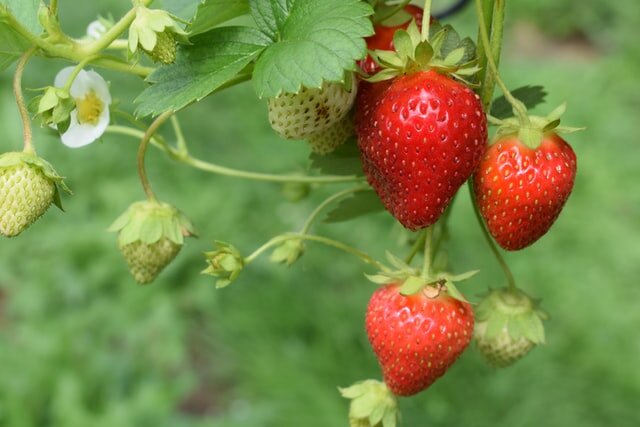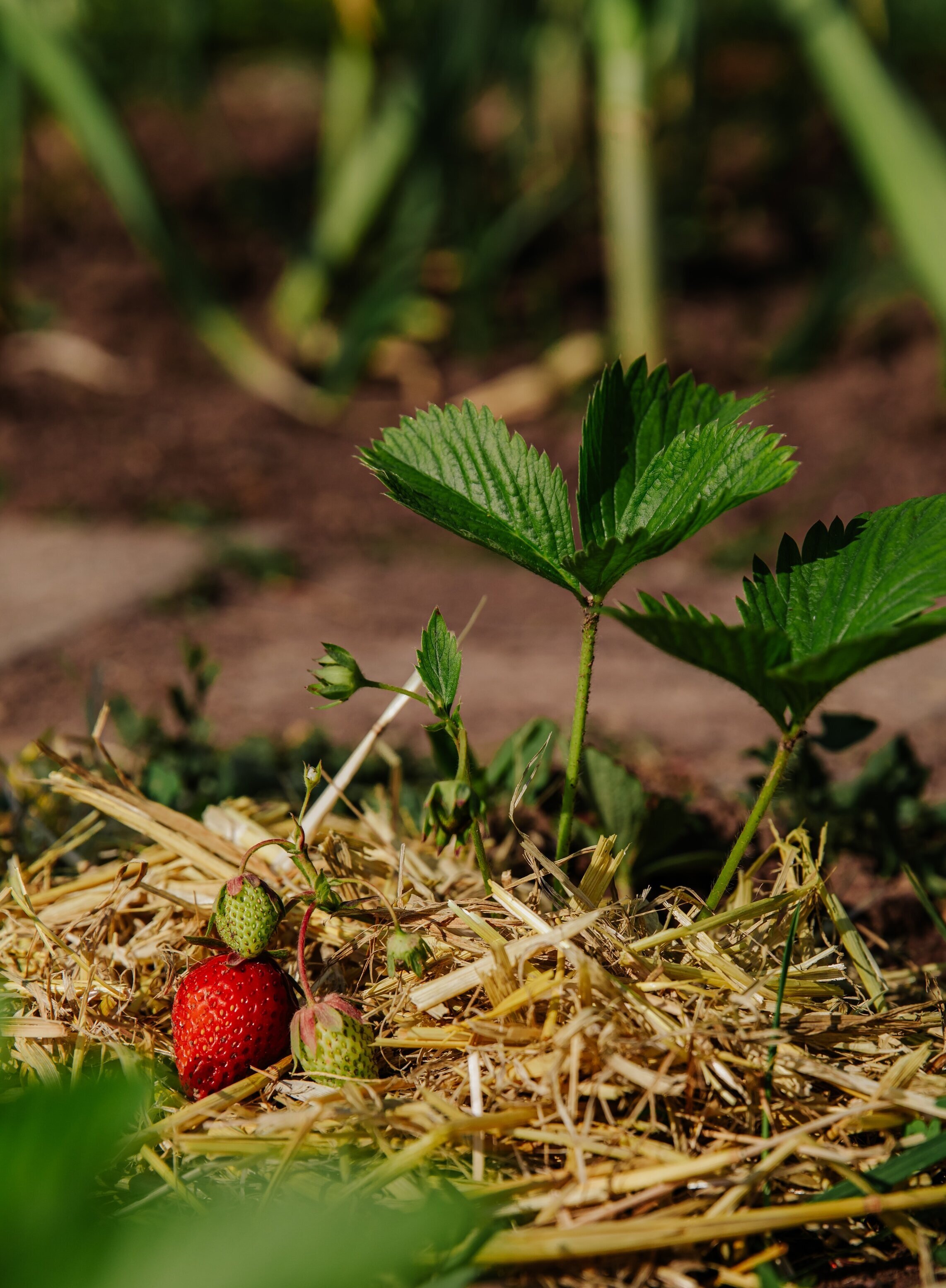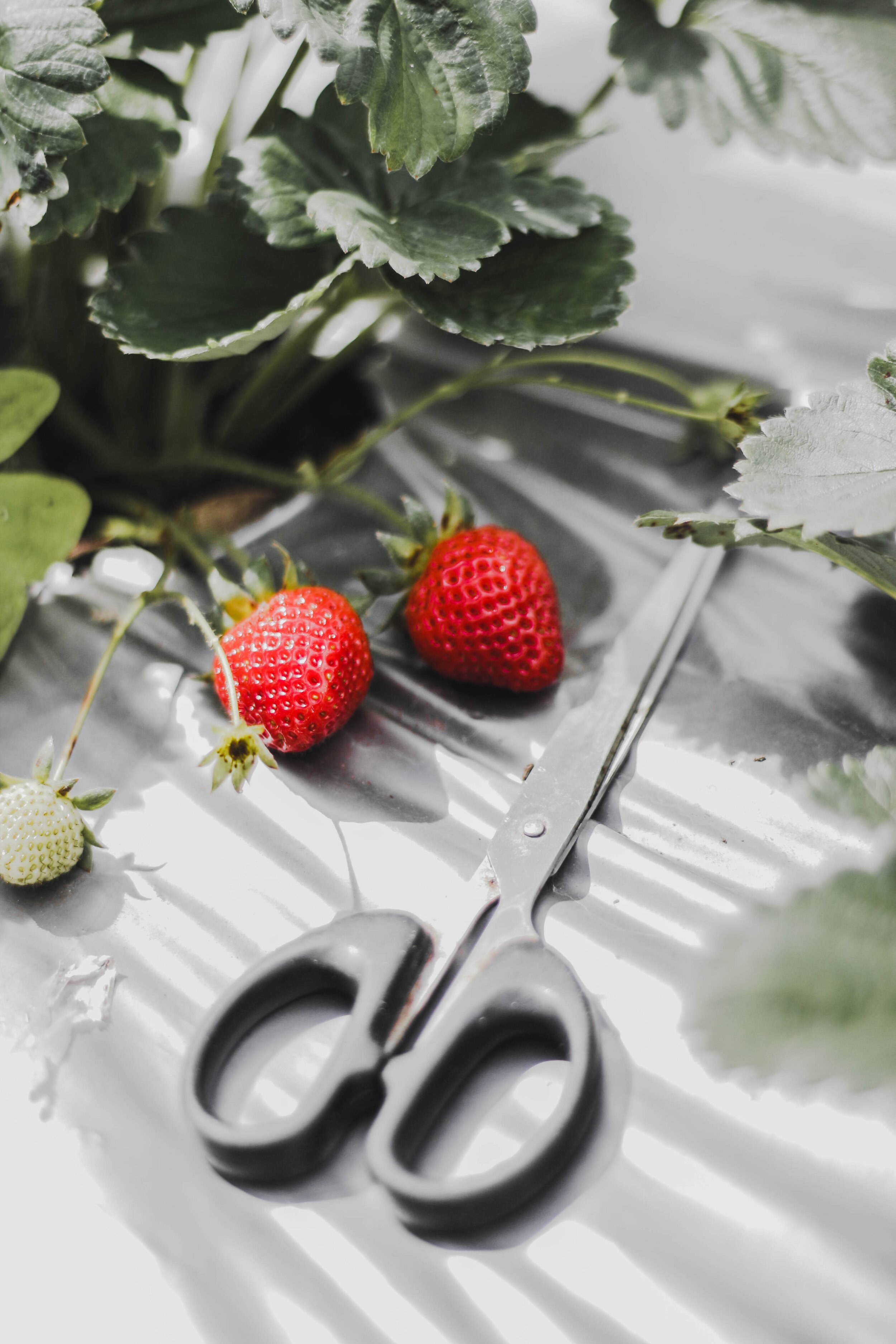How to grow strawberries
Strawberries are among the easiest perennials to grow, both in the ground and in pots. Photo source: Unsplash
I’m not alone in my admiration for strawberries. In ancient Rome, the strawberry symbolized Venus, the Goddess of Love, because of its heart shape and color. In medieval times, stone masons carved strawberries on altars and churches because they symbolized perfection and righteousness. Much more recently—last month, in fact—strawberries have become my ticket to sanity, a means of dealing with the stress of the ongoing pandemic.
“I love strawberries because they act like a living mulch by protecting the soil, plus they produce irresistible fruit.”
Motivated by a craving for fresh-picked strawberries, I’m trying my hand at growing my own. I’ve been working on revitalizing my family’s old planter bed and cultivating strawberries, along with other crops. Working in nature and nurturing new life has been a grounding and gratifying experience. I can’t control much of what’s going on around me, but I know if I carefully water, weed, and fertilize my little garden, I’ll have a harvest to look forward to this summer.
Strawberries are not hard to grow, and if you don’t have a yard—no problem. Strawberries make a good container crop since they’re shallow-rooted and compact. Acadia Tucker, Stone Pier Press’s resident farmer, explains the basics below, and you can refer to our growing guide for more detail. Acadia says one of her favorite things about these berries is their versatility, “I love planting strawberries because they act like a living mulch, protecting the soil and producing irresistible fruits.”
Straw mulch helps hide strawberries from hungry critters and keeps the fruit off the ground and away from other pests. Photo Source: Unsplash.
VARIETIES: The scientific name for strawberries is fragaria x ananassa, and various species of strawberries are native to regions all over the world. Strawberry types are split into three main categories based on when they produce fruit: June-bearing, day-neutral, and ever-bearing.
As their names suggest: June-bearing produce one large crop of fruit in the spring; day-neutral produce smaller harvests during the spring and summer, and; ever-bearing produce two or three crops throughout the growing season.
In this country, the Allstar is popular among home gardeners. It’s a June-bearing type that produces reliable, large harvests of sweet and mild strawberries in a traditional strawberry shape. The Albion variety, which is day neutral, is also common. It produces large berries that are sweeter and darker than most. If you’re looking to try something a little different, the Alpine, an ever-bearing wild French variety, produces tiny strawberries known for their sweet flavor.
TIMING: It’s generally best to plant strawberries in early spring. However, if you have mild, frost-free winters, go ahead and plant in the late fall. Buy strawberry plants in the form of bare root crowns or established seedlings. Strawberries also produce baby plants that sprout from the roots called runners, which can be snipped off and pressed firmly into soil so they establish their own roots and form new plants. If you have a neighbor with an established strawberry patch, consider asking for a few runners, and plant those.
GROWING: Plant seedlings, bare root crowns, or runners 20 inches apart in well-drained, sandy soil in a sunny spot. (Strawberries love the sun.) Mix compost into the first three inches of the soil before planting. If you’re starting with runners, simply press them leaf side up into the soil and they’ll root in the ground on their own. If you’re using bare root crowns or seedlings, dig a hole deep and wide enough to fit and cover the plant’s root system. Make sure the crown of the plant is flush with the soil’s surface and leave it uncovered.
Regularly water your baby plants, about one or two inches a week. Spread phosphorus or nitrogen-rich fertilizer around your plants in the spring to help them produce more fruit. Soak the newly added fertilizer with water to make sure nutrients reach the roots.
Because strawberries are perennials, they need a winter rest period. If you live in a northern climate with very cold winters, consider keeping young strawberry plants inside in pots for the winter and then moving, or planting, them outside in spring. If you live in a warm southern climate, add a layer of mulch to insulate your strawberry plants for the winter so they’re ready to produce in the spring.
Snip strawberries off when they’re bright red. Photo Source: Pexels.
Since just about everyone loves strawberries, especially birds, protect your plants. Try hiding them under leafy vegetables like lettuce or under the cover of straw mulch, which has the added benefit of keeping fruit off the ground and away from other pests. You can also use netting to keep away hungry critters.
Growing in pots: Strawberries work so well in containers they even have their own special pots, known as strawberry urns. But hanging baskets, grow bags, railing planter boxes, and pyramid planters are fine options as well.
Planting in containers can actually be preferable for strawberries because they lift the plants off the ground, offering more protection against pests and soil diseases. Follow the same directions for growing strawberries in containers: plant native varieties and give them lots of sun, regular water, and appropriate fertilizer.
HARVEST: Once your strawberry plants start bearing fruit, harvest the ripe berries quickly before they attract birds and bugs. Snip when they’re bright red. If the berries still have white spots, rotate them so the white area is facing the sun and wait a day or two. Take care to keep fruit off the soil as it’s ripening because it can get moldy. Some gardeners remove all the flowers on their plants in the first year to ensure a bigger crop the following year, but Acadia recommends simply harvesting what you can because the plants need to be replaced every three years anyway.
Put overripe fruit to use and savor your bounty throughout the year, by making a batch of Strawberry Basil Jam, made easy with a quick instructional video. You might also like our rich Strawberry Vegan Cheesecake or savory Hearty Strawberry and Spinach Balsamic Salad.
Audrey Miller is a Stone Pier Press News Fellow based in Berkeley, CA.











